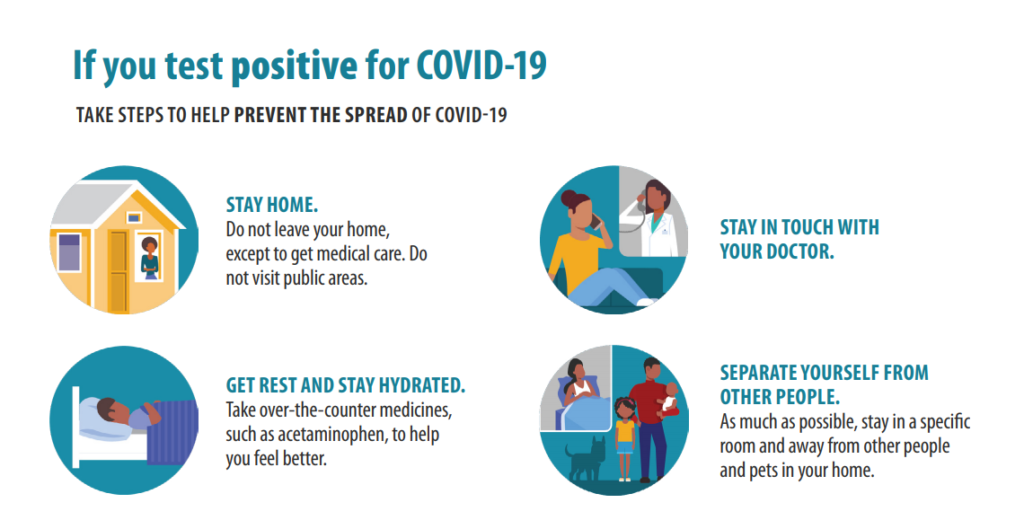Based on CDC,
Provide support
Help cover basic needs
Help the person who is sick follow their doctor’s instructions for care and medicine.
For most people, symptoms last a few days, and people usually feel better after a week.
See if over-the-counter medicines for fever help the person feel better.
Make sure the person who is sick drinks a lot of fluids and rests.
Help them with grocery shopping, filling prescriptions, and getting other items they may need. Consider having the items delivered through a delivery service, if possible.
Take care of their pet(s), and limit contact between the person who is sick and their pet(s) when possible.
Watch for warning signs
- Have their doctor’s phone number on hand.
- Use CDC’s self-checker tool to help you make decisions about seeking appropriate medical care.
- Call their doctor if the person keeps getting sicker. For medical emergencies, call 911 and tell the dispatcher that the person has or might have COVID-19.
When to seek emergency medical attention
Look for emergency warning signs* for COVID-19. If someone is showing any of these signs, seek emergency medical care immediately:
- Trouble breathing
- Persistent pain or pressure in the chest
- New confusion
- Inability to wake or stay awake
- Bluish lips or face
*This list is not all possible symptoms. Please call your medical provider for any other symptoms that are severe or concerning to you.
Call 911 or call ahead to your local emergency facility: Notify the operator that you are seeking care for someone who has or may have COVID-19.

